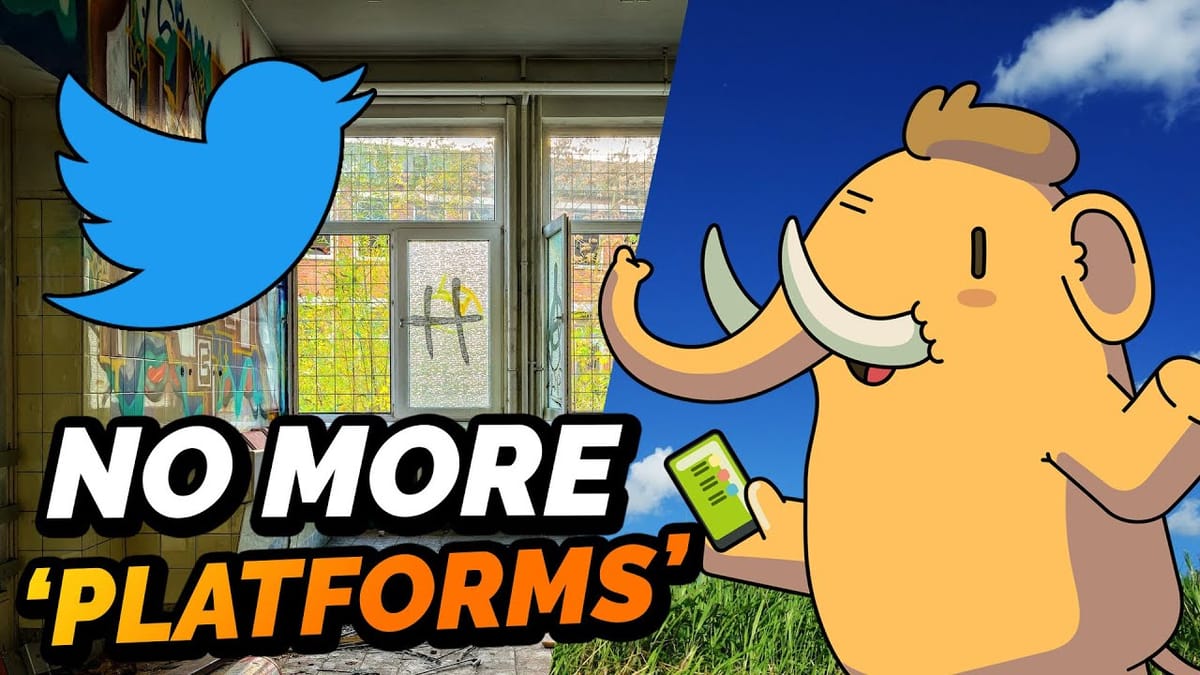Mastodon: Social Media's Elephant in the Room

The Twitter Turmoil
Recently, Elon Musk's acquisition of Twitter has sparked widespread debate and dramatic changes across the platform. From reinstating previously banned accounts to placing the iconic blue checkmark behind a paywall, Musk’s leadership has been anything but conventional. His constant controversies on the platform, alongside mass advertiser withdrawals and large-scale layoffs, have contributed to mounting concerns about Twitter's future.
This turmoil has reignited attention on a longstanding issue: the viability of alternative social media platforms. Historically, alternatives like Steemit, Gab, Parler, and even Hive have briefly captured public interest before fading away. Often positioned as ideologically or operationally distinct from mainstream platforms, these sites struggle to maintain long-term traction.
Mastodon: The Current Contender
However, something different is happening in the wake of Musk’s Twitter overhaul. Those disillusioned by Twitter's new direction are exploring alternatives—this time, many are looking to Mastodon.
Mastodon isn't new; it has existed since 2016. This isn’t its first moment in the spotlight either. Past controversies on Twitter have also prompted smaller waves of users to migrate to Mastodon. But Mastodon offers something other alternatives haven’t: a fundamentally different approach rooted in open-source values and smart technical architecture.
From personal experience, Mastodon has solved many issues I’ve faced on Twitter. Despite having nearly 10,000 followers on Twitter, my posts often saw limited reach and engagement. On Mastodon, with a much smaller following, my posts consistently receive higher interaction—sometimes double or even triple.
The Power of Design: Mastodon as the "Linux of Social Networks"
At its core, Mastodon aims to address social media's problems not through different leadership or corporate funding, but through open-source principles and a decentralized model. This design philosophy is why Mastodon may have the potential to revolutionize social media the way Linux changed computing.
Sustainable social media requires long-term planning. While most platforms focus on raising funds to survive, Mastodon asks a different question: how do we minimize costs? Through a community-driven model, bug fixes, new features, and server hosting are distributed among users.
ActivityPub: Mastodon’s Foundation
Mastodon’s most revolutionary feature lies beneath the surface—ActivityPub. This open protocol enables decentralized social media. Anyone can host a Mastodon server, or “instance,” similar to how email works. A user on mastodon.social can fully interact with someone on mastodon.online, just as a Gmail user can email an Outlook user.
ActivityPub allows cross-platform interaction. Even networks with different interfaces and purposes can communicate through it, provided they're built on the same protocol. This federation means the interests of individuals and communities aren’t in conflict—in fact, the system encourages the creation of independent instances with their own rules, cultures, and goals.
The Network Effect and Mastodon’s Advantage
Traditional platforms benefit from the network effect: the more users, the more valuable the platform becomes. This often kills off alternatives. But Mastodon’s design weakens this dynamic. Users can split off into new communities without destroying the larger ecosystem. Federation distributes the burden of maintenance and moderation across the network, rather than centralizing it.
This decentralization also avoids the trap many alternative platforms fall into—becoming echo chambers for specific ideologies. Mastodon, by design, is more flexible and resilient.
The Harsh Truth: Mastodon Has Serious Flaws
Despite its promise, Mastodon has significant flaws—many of which became apparent during the latest Twitter exodus. While these issues are serious, they are not insurmountable.
The Spam Problem
Unlike Twitter or Reddit, Mastodon lacks robust automated spam filters. Moderators often have to manually deal with spam accounts, which can become overwhelming. To prevent this, many instances require invite codes or manual approval for new accounts—but these barriers deter new users.
Confusing Sign-Up Process
New users often don’t understand what an "instance" is or why it matters. Although the official Mastodon website includes an instance selection tool, it still requires a basic understanding of the system—something many users lack. Most instance lists are automated and can’t judge subjective factors like spam levels or moderation strictness.
Instance Lock-In
Once you've picked an instance, switching isn't seamless. While you can migrate your followers, your posts do not transfer. Losing your content in the event of a suspension or instance shutdown is a real risk.
Moreover, users only get one local timeline—meaning your content is primarily visible within your instance. If you’re an artist, for example, your work may only reach one community, despite interest from many.
Potential Solutions
To address these problems:
- Curated Instance Lists: A manually curated list with distributed invite codes could prevent spam while making it easier for new users to join.
- Post Migration: Enabling post migration would help users switch instances without losing their content.
- Timeline Aliasing: Letting users appear in multiple timelines would solve issues around visibility for people with diverse interests.
These aren't pie-in-the-sky ideas. They're real possibilities that could significantly improve the user experience.
Moving Forward: Mastodon Needs Us
Mastodon's greatest strength—its federation model—is also its biggest challenge. Its complexity confuses newcomers, and poor onboarding can quickly turn people away. But these are design problems, and design problems can be fixed.
We need to mask the complexity of instances behind seamless user experiences, just as engineers hide the intricacies of electronics behind simple interfaces. Fixing these problems is difficult, but not impossible—and the burden doesn’t fall on any single company or team.
The Power is in Your Hands
Unlike centralized platforms, Mastodon offers real agency to its users. You don’t need to be on the core development team to make a difference.
- If you can code, contribute to Mastodon or its supporting tools.
- If you speak multiple languages, help translate documentation.
- If you make videos, create tutorials to help new users.
- If you have time, volunteer to moderate smaller instances.
- If you have money, donate to help cover server costs.
And even if you have none of the above, you can still help just by being part of the community and sharing your experiences.
Mastodon doesn’t just offer an alternative to Twitter—it offers a different philosophy for how social media can work. But for it to succeed, it needs people like us to shape it. The tools are already in our hands. All we have to do is build.






